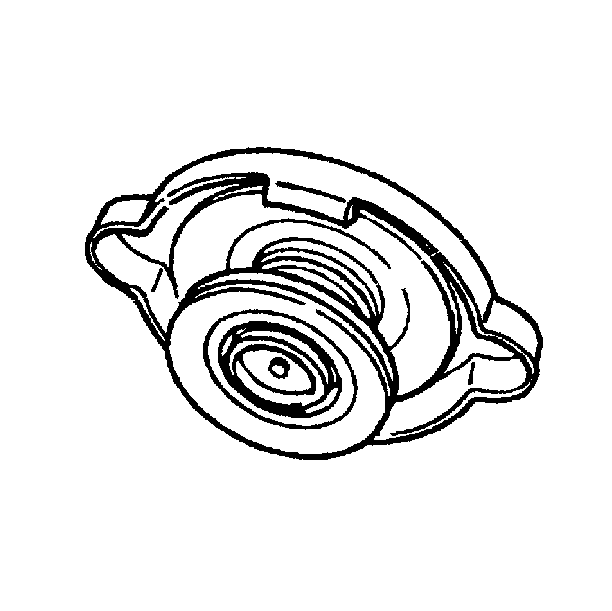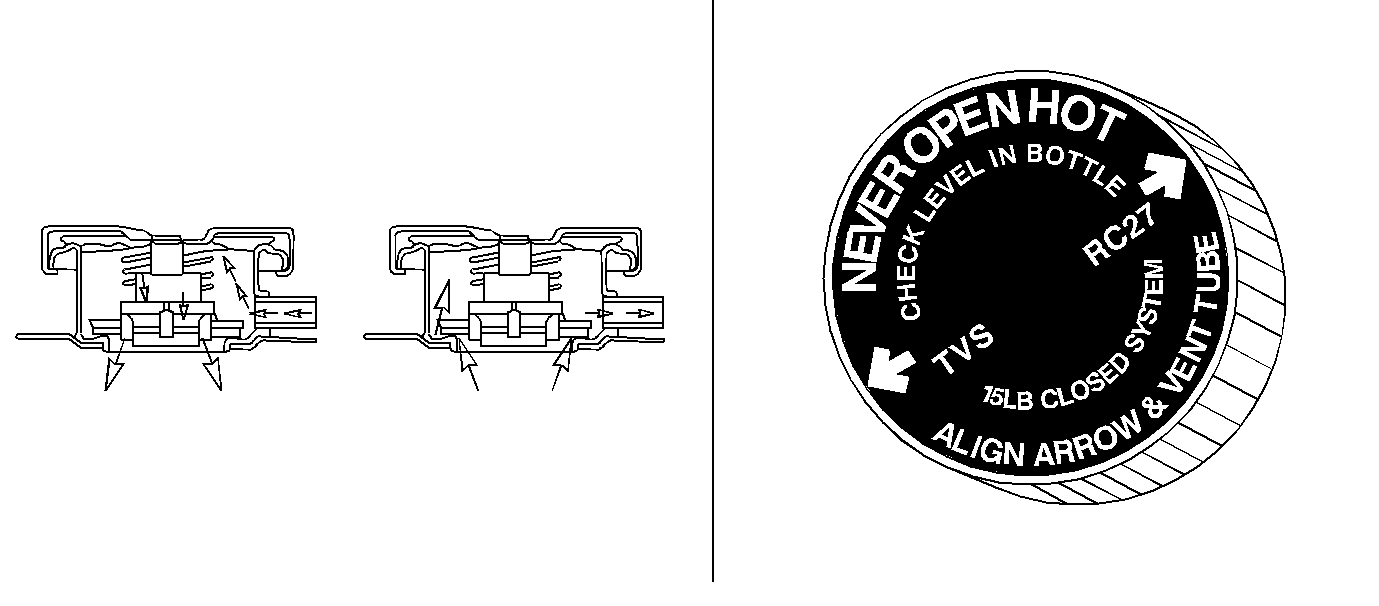Caution: As long as there is pressure in the cooling system, the temperature can be considerably higher than the boiling temperature of the solution in the radiator, without causing the solution to boil. Removal of the radiator cap while the engine is hot and the pressure is high will cause the solution to boil instantaneously and possibly with explosive force, spewing the solution over the engine, fenders, and person removing the cap. Under some conditions, the engine coolant is combustible.

A pressure-vent cap is used with the cross-flow radiator to allow a buildup of 103 kPa (15 psi) in the cooling system. This pressure raises the boiling point of the coolant to approximately 125°C (262°F) at sea level. DO NOT remove the radiator cap to check engine coolant level; check coolant visually at the see-through coolant reservoir. Coolant should be added ONLY to the reservoir, when the system cools.
The pressure-vent radiator filler cap contains a blow off or pressure valve and a vacuum or atmospheric valve. The pressure valve is held against its seat by a spring or predetermined strength, which protects the radiator by relieving pressure if it exceeds design limits. The vacuum valve is held against its seat by a spring, which permits opening of the valve to relieve vacuum created in the system when it cools off and which otherwise might cause the radiator to collapse.

The radiator cap is designed to discourage inadvertent removal. A rubber asbestos gasket is added to the diaphragm spring at the top of the cap. Embossed on the cap is a caution against its being opened and arrows indicating the proper closed position.
